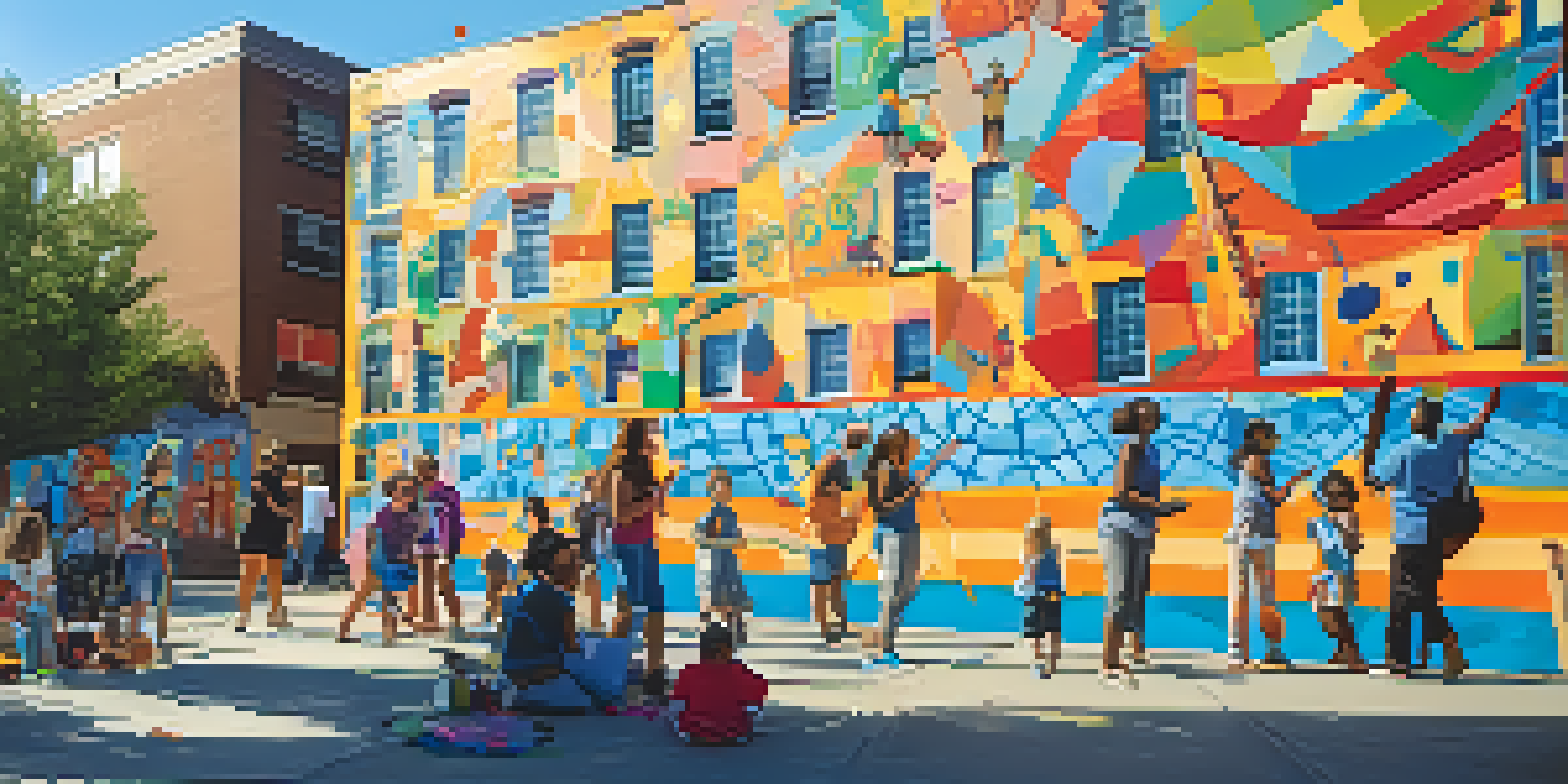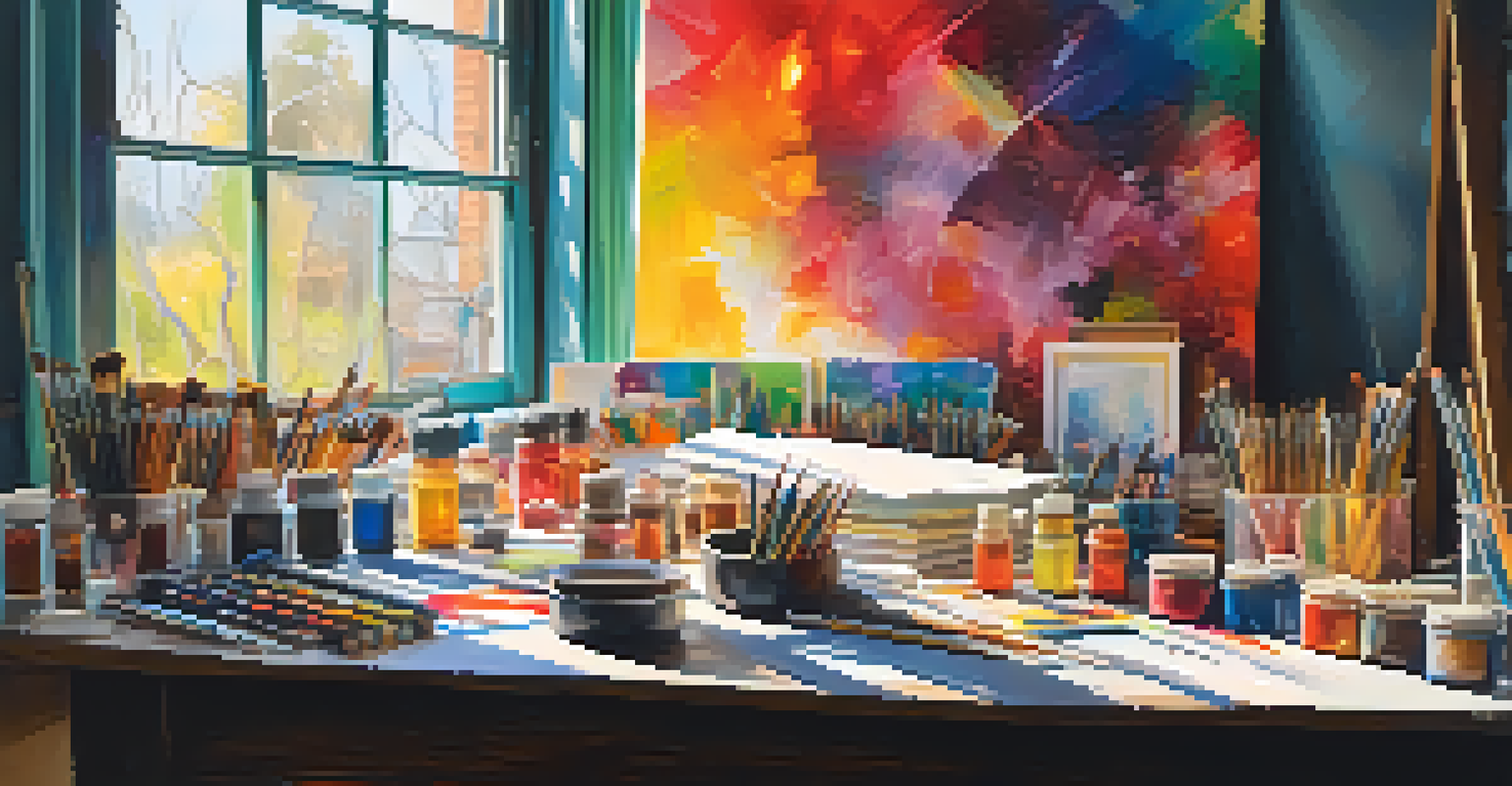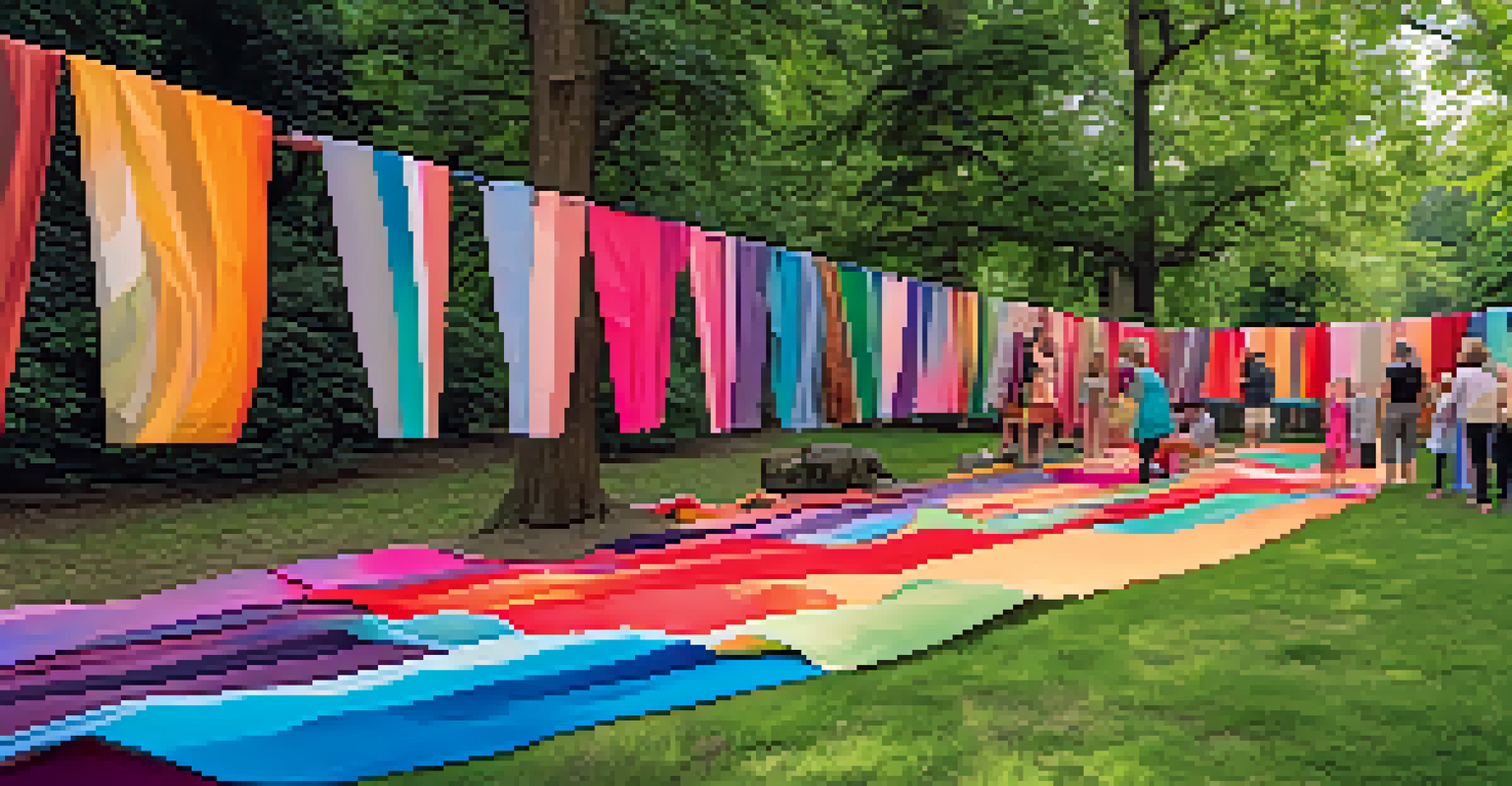The Therapeutic Role of Playfulness in Artistic Practices

Understanding Playfulness and Its Importance
Playfulness is often seen as a simple, carefree attitude, but it holds deeper significance, especially in artistic practices. It encourages spontaneity and creativity, allowing artists to explore ideas without the fear of judgment. This sense of freedom can lead to unexpected discoveries and innovations in their work.
Play is the highest form of research.
In the context of art, playfulness can transform a rigid process into a joyful exploration. For instance, consider how a child approaches drawing—without worrying about the final product, they immerse themselves in the act of creation. This mindset can be incredibly therapeutic, reducing stress and fostering a sense of connection with one’s inner self.
Moreover, playfulness often serves as a bridge between the conscious and subconscious mind. It opens pathways to deeper emotions and thoughts, making it an essential tool for artists looking to express complex feelings. By embracing playfulness, artists can tap into a more authentic version of their creative selves.
The Therapeutic Benefits of Playfulness in Art
Artistic expression often acts as a therapeutic outlet, and incorporating playfulness can amplify its benefits. Engaging in playful art-making activities can reduce anxiety, boost confidence, and enhance emotional resilience. This is particularly important in therapeutic settings where individuals may feel overwhelmed by their emotions.

For example, art therapy sessions often include playful approaches like doodling, which allow participants to express feelings without the pressure of creating a 'perfect' piece. This liberating experience can foster healing, as it encourages self-exploration and discovery in a safe environment. As participants engage with their creative instincts, they may uncover insights about themselves.
Playfulness Enhances Creative Freedom
Embracing playfulness allows artists to explore their creativity without fear of judgment, leading to unexpected discoveries.
Additionally, playful art practices can create a sense of community among artists and participants. Group activities, such as collaborative murals or interactive installations, promote social connections and shared experiences. This communal aspect of playfulness can be incredibly healing, reinforcing bonds and support networks among individuals.
Examples of Playfulness in Artistic Practices
Many artists incorporate elements of play into their practices to spark creativity and joy. Take, for instance, artist Yayoi Kusama, whose immersive installations invite visitors to engage with art in a playful manner. Her use of polka dots and mirrors creates a whimsical environment where participants can lose themselves in the experience, highlighting the therapeutic nature of play.
Creativity is intelligence having fun.
Similarly, the Surrealist movement embraced playfulness through techniques like automatic drawing, where artists would allow their hands to move freely without conscious control. This method often led to fascinating outcomes, revealing hidden thoughts and emotions. Such practices not only enhance creativity but also provide a sense of liberation.
Even modern art forms, like interactive digital art, encourage playful engagement. These artworks often invite viewers to participate, blurring the lines between artist and audience. This playful interaction can evoke joy, curiosity, and a sense of wonder, reinforcing the healing power of creativity.
Incorporating Playfulness into Your Artistic Journey
Bringing playfulness into your art practice doesn’t require grand gestures; small changes can make a big difference. Start by setting aside time for free exploration without any expectations. Allow yourself to experiment with different materials or techniques, letting your instincts guide you rather than focusing on the end result.
Consider scheduling 'playdates' with your art supplies—times when you can engage with your creative tools simply for fun. This could mean creating silly sketches, mixing colors without a plan, or even trying out unconventional mediums. Embracing this playful spirit can reignite your passion for art and help you reconnect with your creative self.
Art as a Therapeutic Outlet
Incorporating playfulness into art practices can reduce anxiety and foster emotional resilience, making art a powerful healing tool.
Finally, don't shy away from collaborating with others. Sharing ideas and experimenting together can amplify the sense of playfulness in your practice. Whether it's joining a local art group or participating in community art projects, these connections can enhance your creativity and provide valuable support.
Playfulness as a Catalyst for Innovation
Playfulness is not only about enjoyment; it can also be a significant driver of innovation in the art world. When artists embrace a playful attitude, they often break free from conventional constraints, leading to new ideas and approaches. This freedom encourages experimentation, which can result in groundbreaking artistic expressions.
Take the example of contemporary artists who merge technology with traditional art forms. By playfully exploring the boundaries of what art can be, they create unique experiences that challenge viewers' perceptions. This innovative spirit, fueled by playfulness, can redefine artistic practices and open doors to new possibilities.
Moreover, playfulness fosters an environment where mistakes are seen as opportunities for growth rather than failures. This mindset shift is crucial for artists looking to push their boundaries and explore uncharted territories in their work. By embracing play, artists can cultivate a culture of creativity that thrives on exploration and discovery.
The Role of Playfulness in Community Art Projects
Community art projects often thrive on the principles of playfulness, bringing together diverse groups to create something meaningful. These collaborative efforts encourage participants to engage with art in a joyful and inclusive manner, breaking down barriers and fostering connections. Playfulness can transform a simple project into a shared celebration of creativity.
For instance, community mural projects often invite local residents to contribute their artistic visions, celebrating individuality while building a cohesive piece of art. This playful collaboration not only beautifies public spaces but also strengthens community bonds. Participants often leave the experience feeling a sense of pride and accomplishment.
Community Art Fosters Connection
Playful community art projects encourage collaboration and inclusivity, strengthening bonds among participants and making art accessible to all.
Additionally, incorporating playfulness in community art initiatives can attract a wider audience, making art accessible to people of all ages and backgrounds. By engaging participants through fun and interactive activities, these projects can inspire a love for art and creativity that lasts long after the project is completed.
Nurturing Playfulness for Lifelong Creativity
Nurturing a playful spirit is essential for sustaining creativity throughout life. As we grow older, societal norms often discourage playfulness, leading many to view art as a serious endeavor rather than a joyful expression. However, reconnecting with that playful mindset can keep the creative spark alive, no matter your age.
Incorporating playfulness into daily life can take various forms, such as engaging in spontaneous creative activities or seeking out inspiration in everyday experiences. By viewing the world through a playful lens, you can cultivate curiosity and openness, essential qualities for any artist. This approach not only enhances your art practice but also enriches your overall well-being.

Ultimately, embracing playfulness can transform your relationship with art. It allows for exploration, experimentation, and joy, fostering a deeper connection with your creative self. By prioritizing playfulness, you can embark on a lifelong journey of artistic discovery and personal growth.